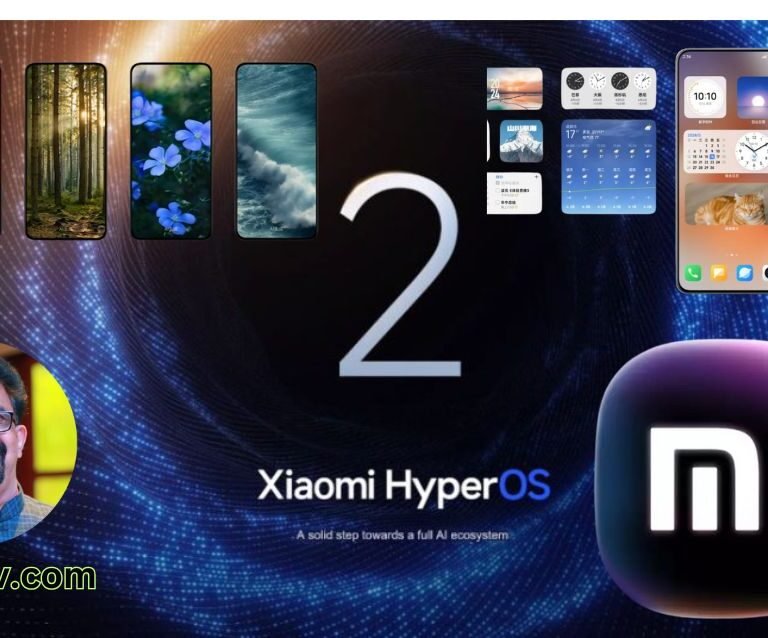YouTube, launched in February 2005, has grown to become one of the most significant video-sharing platforms in the world
YouTube, launched in February 2005, has grown to become one of the most significant video-sharing platforms in the world. Founded by three former PayPal employees—Chad Hurley, Steve Chen, and Jawed Karim—the platform revolutionized the way users consume and share video content on the internet. The concept was simple: providing an easy way for users to upload, share, and view videos. With its intuitive interface and innovative features, YouTube quickly gained traction, attracting millions of users worldwide.
In November 2006, YouTube’s trajectory took a significant turn when it was acquired by Google for approximately $1.65 billion in stock. This acquisition not only solidified YouTube’s position in the digital landscape but also provided the platform with the resources necessary to expand its reach and capabilities. Today, it operates as a subsidiary of Google and boasts over two billion logged-in monthly users, showcasing its popularity across diverse demographics. YouTube has become a household name synonymous with online video content, influencing various aspects of modern culture, entertainment, and communication.
The platform has evolved beyond simple video sharing, introducing features like live streaming, premium subscriptions, and an array of monetization options for content creators. Additionally, YouTube has played a pivotal role in democratizing media, allowing anyone with an internet connection to become a creator, share their narrative, and engage with audiences on a global scale. In this digital age, exploring YouTube’s history, features, and social impact is essential to understanding its role as a global powerhouse in the digital landscape.
Founders of YouTube
YouTube, one of the most influential platforms in the digital age, was founded by three visionaries: Steve Chen, Chad Hurley, and Jawed Karim. These individuals brought together their unique backgrounds and experiences to create a service that reinvented how people interacted with video content online. Prior to YouTube, all three founders were employed at PayPal, where they honed their skills in technology and entrepreneurship. The experience gained during their time at PayPal laid a solid foundation for their future endeavors and fostered a culture of innovation that would be pivotal in the development of YouTube.
The inspiration to create YouTube stemmed from a series of frustrations that the founders experienced while trying to share videos online. Their collective realization that existing platforms were cumbersome and lacked user-friendliness motivated them to develop a simpler, more accessible solution. This vision was not only about providing a place for users to upload and share videos but also about fostering a sense of community through video sharing. The trio aimed to democratize video production and consumption, empowering individuals to create and distribute their content without the barriers imposed by traditional media.
The Launch of YouTube
The inception of YouTube can be traced back to an innovative idea born on February 14, 2005. The platform emerged as an answer to the growing need for a user-friendly site that allowed individuals to upload, share, and view videos effortlessly. The three co-founders, Chad Hurley, Steve Chen, and Jawed Karim, initially aimed to create a video-sharing platform that addressed the difficulties often encountered with traditional video distribution methods. However, their journey was fraught with challenges, including limited technical resources and competition from established media entities.
Upon its launch, YouTube faced an uphill battle to attract users. Early adopters were primarily comprised of tech enthusiasts and those who appreciated the novelty of online video sharing. Despite a lukewarm reception initially, the platform’s intuitive interface and unique features quickly caught the attention of a broader audience. One key aspect that set YouTube apart during its launch was its emphasis on community inclusion, allowing users not only to upload content but also to create accounts, comment on videos, and subscribe to channels. This interactive framework distinguished YouTube from other video sites, providing a comprehensive social experience.
Technological innovations were integral to YouTube’s initial success. The founders implemented advanced streaming technology that enabled users to upload and watch videos with minimal buffering, a significant improvement over existing platforms. Additionally, the decision to allow various video formats made it accessible for a wide range of creators and viewers. As engagement levels began to rise, the platform began to gain traction, leading to accelerated growth. In its early days, the combination of user-friendly design, a sense of community, and technological prowess poised YouTube for its future trajectory as a leading global powerhouse in the video-sharing domain.
Acquisition by Google
In November 2006, Google announced its acquisition of YouTube for $1.65 billion in stock, a decision that would significantly shape the landscape of online video content. At the time, YouTube had rapidly risen to prominence as a platform for video sharing, attracting millions of users and a diverse array of content creators. Google’s primary motivation for the acquisition was to enhance its own video capabilities, as it recognized the growing consumption of video content on the Internet and the opportunity to dominate this emerging market.
The acquisition fueled substantial growth for YouTube, providing the platform with access to Google’s vast resources, including advanced technology and infrastructure. This support enabled YouTube to improve its site performance, increase video upload limits, and enhance user experience. As a result, the platform experienced rapid expansion, drawing in more users and content creators eager to benefit from its enhanced capabilities. Furthermore, Google’s expertise in online advertising allowed YouTube to refine its monetization models, thus creating lucrative opportunities for content creators through advertising revenue.
The impact of Google’s ownership was especially prominent for both content creators and advertisers. Creators gained access to new tools and resources, allowing them to grow their audiences and enhance their content visibility. At the same time, advertisers found the platform increasingly attractive for reaching a specific demographic through targeted ads, resulting in a flourishing digital advertising market. However, the acquisition also introduced new policies and guidelines, impacting how content was managed on the platform. Stricter content regulations and copyright policies were put into place, reflecting a more corporate oversight over the once-independent venture. Overall, Google’s acquisition of YouTube marked a pivotal moment in the evolution of online video, ensuring its position as a global powerhouse in the digital landscape.
YouTube’s Growth and Evolution
Launched in 2005, YouTube began as a straightforward video-sharing platform, envisioned to allow users to easily upload, share, and view videos online. The site’s initial simplicity belied its vast potential, which rapidly became apparent as users flocked to discover, create, and engage with multimedia content. By 2006, the platform experienced a pivotal change when it was acquired by Google for $1.65 billion in stock, marking the first significant step in its evolution into a global content powerhouse.
One of the most transformative milestones in YouTube’s journey was the introduction of monetization options, most notably through the YouTube Partner Program, initiated in 2007. This allowed content creators to earn revenue from ads displayed on their videos, incentivizing quality content creation and expanding the number of YouTube creators. This monetization model propelled the platform’s growth, fostering a diverse range of content and enabling creators to turn their passions into profitable careers.
Over the years, YouTube diversified its content portfolios, expanding into regions like gaming, beauty, education, and vlogging. This diversification catered to an increasingly varied audience, showcasing how adaptable the platform became in recognizing and fulfilling individual interests and trends in content consumption. Additionally, shifts in user engagement became evident with the rising popularity of live streams and short-form videos, effectively responding to the audience’s demand for immediacy and authenticity.
The evolution continued as YouTube integrated advanced AI algorithms, facilitating personalized content recommendations that significantly enhanced user experience. The platform embraced mobile optimization, paving the way for an increase in smartphone viewers and expanding its reach across global borders. Through constant innovation, YouTube has effectively maintained its status as a leader in the digital content space, continually reshaping the landscape of online media consumption.
Current Leadership and Management
Neal Mohan has been at the helm of YouTube since February 16, 2023, succeeding Susan Wojcicki, who had a notable impact on the platform’s growth and strategy during her tenure. Mohan has a rich background, having joined Google in 2008, where he held various significant roles culminating in his position as Chief Product Officer at YouTube prior to taking on the role of CEO. His experience at Google, particularly in advertising products, gives him a unique perspective on how to harness technology to enhance user experience while also catering to content creators and advertisers alike.
Mohan’s leadership style is defined by innovation and adaptation, key components that have enabled YouTube to navigate the rapidly changing digital landscape. Under his guidance, the platform emphasizes a commitment to transparency and responsibility, particularly in content moderation and policy enforcement. This focus addresses growing concerns about online safety and misinformation, as well as the need to protect creators’ rights while managing the vast array of content uploaded daily.
In his visionary approach, Mohan has indicated a desire to leverage YouTube’s strengths to explore new revenue models for creators, including enhanced ad formats, subscription services, and a potential focus on immersive technologies such as virtual and augmented reality. His emphasis on diversification and innovation reflects a strategic management philosophy aimed at strengthening YouTube’s market position while maintaining its relevance in an increasingly competitive industry. Mohan’s leadership aims not only to sustain YouTube’s dominance in the digital video space but also to propel it into new realms of engagement and monetization, ensuring it remains at the forefront of content consumption in the years to come.
Advertising and Revenue Model
YouTube, since its inception in 2005, has developed a robust advertising and revenue model that has significantly contributed to its growth and global influence. The primary method through which YouTube generates revenue is through advertising, leveraging the extensive reach of its platform. By utilizing Google AdSense, the integration of advertising into video content allows YouTube to serve targeted ads based on user demographics, interests, and browsing history. This approach ensures that advertisements resonate with viewers, leading to higher engagement and click-through rates.
The YouTube advertising ecosystem comprises various ad formats, including skippable and non-skippable video ads, display ads, and overlay ads, giving advertisers multiple options to engage with their audiences. Skippable ads, for instance, allow viewers the option to skip after five seconds, ensuring that advertisers are only paying for engaged viewers. Moreover, non-skippable ads guarantee full ad exposure, catering to brands that prioritize message delivery over viewer discretion. These diverse advertising formats contribute to YouTube’s appeal for businesses, enabling them to reach potential customers effectively.
YouTube’s revenue-sharing model also plays a pivotal role in fostering a dynamic content creation environment. The platform allows creators to monetize their videos, leading to a mutually beneficial relationship between YouTube and its users. By sharing advertising revenue with content creators, who are incentivized to produce high-quality, engaging content, YouTube ensures a steady influx of new and diverse videos to its platform. This synergy not only aids in retaining viewers but also enhances the overall viewer experience, thereby driving advertising revenue further.
The significance of advertising in maintaining YouTube’s financial stability cannot be overstated. Continuous investment in advertising technology, partnerships with brands, and exploring alternative revenue streams, such as merchandise and subscription services, bolsters YouTube’s quest for sustainable growth amidst the rapidly evolving digital landscape.
Content Ownership and Licensing
YouTube operates under a structured framework for copyright policies that significantly influence content ownership and licensing. Primarily, the platform offers users two types of licenses for their uploaded content: the standard license and the Creative Commons license. The standard license provides creators with full copyright protection, allowing them to retain ownership of their content while granting YouTube and users certain rights to view and share the videos. This approach ensures that the original creator maintains control over distribution and monetization, which is crucial for building a career on the platform.
On the other hand, the Creative Commons license allows creators to share their videos with fewer restrictions. By choosing this option, users can allow others to reuse and modify their work, as long as they provide appropriate credit. This model fosters collaboration and community, but it comes with risks; once content is released under this license, the creator relinquishes some control, making it essential for content creators to consider carefully how they wish to manage their intellectual property.
Understanding the nuances of these licensing options is vital as they carry significant implications for content creators. Copyright ownership not only protects the original work but also serves as a legal safeguard against potential infringements. Creators can face legal challenges when their content is copied or used without permission, emphasizing the need to be diligent about copyright enforcement. In this fast-evolving digital landscape, staying informed about copyright policies is crucial for creators seeking to navigate the complexities of owning their content on YouTube.
Since its inception in 2005, YouTube has profoundly transformed the landscape of media consumption and shaped societal dynamics
Since its inception in 2005, YouTube has profoundly transformed the landscape of media consumption and shaped societal dynamics. As one of the largest video-sharing platforms in the world, YouTube has altered how individuals engage with content, shifting from traditional media avenues to a more democratized space where anyone can create and share videos. This transition has ushered in a new era of media consumption habits; audiences now favor on-demand access to content, leading to a significant decline in conventional television viewership.
The platform has also played a pivotal role in providing a voice to marginalized communities, amplifying narratives that were previously underrepresented in mainstream media. YouTube has empowered creators from diverse backgrounds to share their stories and experiences, leading to increased visibility for various social issues. This phenomenon has not only fostered a sense of community among these creators but has also facilitated broader conversations surrounding diversity, inclusion, and representation in media.
Moreover, YouTube has emerged as a powerful tool for influencing public opinion. The accessibility of video content allows users to access a myriad of perspectives on pressing social, political, and cultural issues. Content creators often engage with their audiences in a manner that resonates deeply, potentially swaying opinions and inspiring action. In recent years, YouTube has also been harnessed for educational purposes, complementing traditional learning methods and reaching a global audience. The platform facilitates the dissemination of information, tips, and guidance on a plethora of subjects, revolutionizing how knowledge is shared and consumed.
Additionally, YouTube has proven to be an effective medium for activism, allowing movements to gain prominence through viral videos and campaigns. As the platform continues to evolve, its impact on society and media will undoubtedly grow, highlighting its critical role in shaping cultural dialogues in the 21st century.









